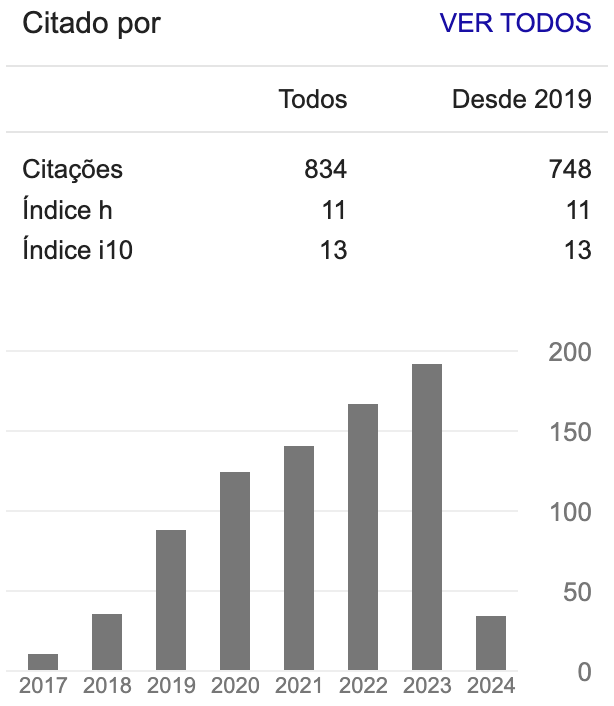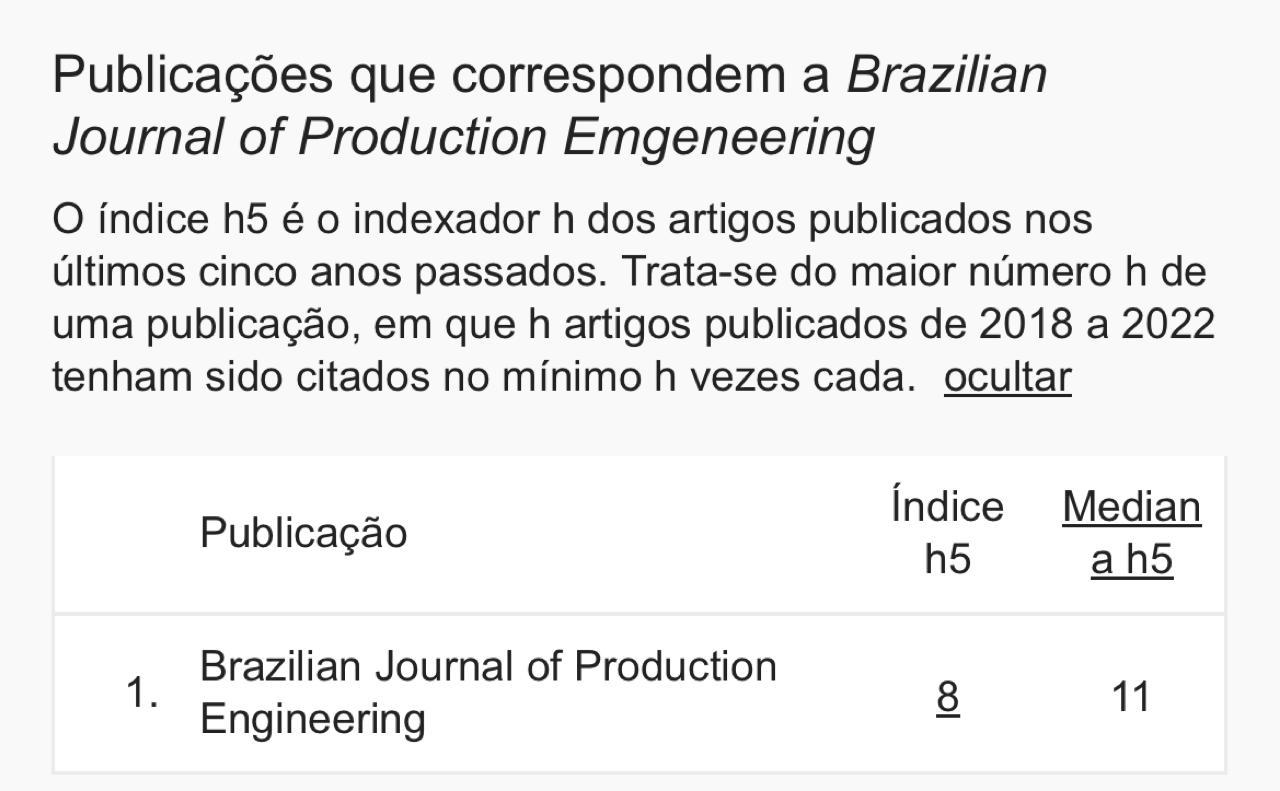AET and FMEA for classification of ergonomic risks in small civil construction
DOI:
https://doi.org/10.47456/bjpe.v7i2.33683Keywords:
Ergonomics, Safety at work, FMEA , ConstructionAbstract
Ergonomics can be understood as the study of the adequacy of the workplace for employees, in order to seek a coherent solution to improve well-being and activities developed in daily life. Ergonomics is not something inaccessible for civil construction, however companies stop investing in its implementation, do not carry out training or preventive campaigns, consequently, with the lack of it, it can cause the appearance of injuries by repetitive efforts, which can get worse and even cause the employee to leave. The actions to prevent occupational pathologies are measures that contribute to the reduction of occupational accident rates, taking into account that the construction site is the most propitious environment for the emergence of ergonomic problems because it encompasses a series of activities in the same sector .This article aims to identify and describe the most common ergonomic risks in civil construction, using the Failure mode and effect analysis (FMEA) method, obtaining the Risk priority number (RPNs) to prioritize the flaws found, thereby pointing out measures preventive measures. For this, a case study was carried out on the construction of the camelódromo in the city of Imperatriz - MA, with emphasis on the execution processes of lifting the walls and transporting in a wheelbarrow; with the purpose of showing inappropriate postures and how to execute it correctly without creating ergonomic risks.
Downloads
References
ACOMEST, Assessoria de comunicação da Ocupacional Medicina e Engenharia de Segurança do Trabalho. Ergonomia: Mantenha a postura no trabalho. Recuperado de http://www.ocupacional.com.br/ergonomia-mantenha-a-psotura-no-trabalho/
Anuário Estatístico da Previdência Social/Ministério da Fazenda, Secretaria de Previdência, Empresa de Tecnologia e Informações da Previdência. 25 DE ABRIL DE 2018. Recuperado de http://sa.previdencia.gov.br/site/2018/08/aeps2016.pdf
Associação Brasileira De Normas Técnicas. (2014). NR 04: Serviços especializados em engenharia de segurança e em medicina do trabalho, Rio de janeiro.
Associação Brasileira De Normas Técnicas. (2014). NR 17: Ergonomia, Rio de Janeiro.
Associação Brasileira De Normas Técnicas. (2014). NR 18: Condições e meio ambiente de trabalho na indústria da construção, Rio de janeiro.
Bureau Internacional Do Trabalho. (2009). A saúde e segurança do trabalho: uma coleção de módulos – ergonomia. Portugal: Etigrafe,.
Cavaignac, A. L. D. O., & Uchoa, J. G. L. (2018). Obtaining FMEA’sindices for occupational safety in civil construction: a the oretical contribution. Brazilian Journal of Operations & Production Management, 15(4), 558-565.
Francisco, W. G., & Medeiros, A. P. (2016). Análise ergonômica: estudo de caso do depósito de uma empresa de materiais para construção da Grande Florianópolis. DA Pesquisa, 11(15), 271-290.
Gomes, H. P. (2011). Construção civil e saúde do trabalhador: um olhar sobre as pequenas obras (Doctoral dissertation).
Gomes, D. M., Silveira, F. G. H., & Horsth, A. A. (2017). Avaliação ergonômica do trabalhador na construção civil: riscos minimizados por regulamentação e ginástica laboral. REMAS-Revista Educação, Meio Ambiente e Saúde, 7(1), 17-27.
Helman, H., & Andery, P. R. P. (1995). Analise de falhas:(aplicação dos métodos de FMEA e FTA). UFMG, Escola de Engenharia.
Kassada, D. S., Lopes, F. L. P., & Kassada, D. A. (2011). Ergonomia: atividades que comprometem a saúde do trabalhador.
Mota, C. P. A., & de Oliveira Cavaignac, A. L. (2019). Avaliação de risco ocupacional em obras de pequeno porte de unidades unifamiliares com aplicação do FMEA: uma investigação sobre trabalho em altura e escavações. Brazilian Journal of Production Engineering-BJPE, 25-35.
Silva Netto, E. P. D. (2015). Análise das condições ergonômicas de trabalho em atividades típicas na execução de revestimentos em superfícies verticais de edificações (Master's thesis, Universidade Tecnológica Federal do Paraná).
Stamatis, D. H. (2003). Failure mode and effect analysis: FMEA from theory to execution. Quality Press.
Silva, M. L. L., Bacelar, I. V. A., Alves, D. R., Pereira, C. S., & Oliveira, M. V. M. (2016). Riscos ocupacionais a que estão expostos os trabalhadores da construção civil. Revista Bionorte, 5(1).
Iida, I. (2005). Ergonomia: projeto e produção. 2ª. Edição. São Paulo, Edgard Blücher.
Iida, I., & Buarque, L. I. A. (2016). Ergonomia: projeto e produção. Editora Blucher.
Saurin, T. A. (2005). Segurança no trabalho e desenvolvimento de produto: diretrizes para integração na construção civil. Production, 15(1), 127-141.
Vieira, R. B. (2010). Interferência ergonômica nas atividades da construção civil: estudo de caso em uma obra de Feira de Santana. 2010. 55 f. Trabalho de conclusão de curso (bacharel em engenharia civil) – Universidade Estadual de Santana. Feira de Santana.
Uchoa, J. G. L., de Sousa, M. J. A., Silva, L. H. V., & Cavaignac, A. L. D. O. (2019). FMEA method application based on occupational risks in the construction industry on work at height: A theoreticalcontribution. Internati onal Journal of Advanced Engineering Researchand Science, 6(10).
Downloads
Published
How to Cite
Issue
Section
License
Copyright (c) 2021 Brazilian Journal of Production Engineering - BJPE

This work is licensed under a Creative Commons Attribution-NonCommercial-ShareAlike 4.0 International License.
Atribuição-NãoComercial-CompartilhaIgual
CC BY-NC-SA
This license lets others remix, adapt, and build upon your work non-commercially, as long as they credit you and license their new creations under the identical terms.






































































